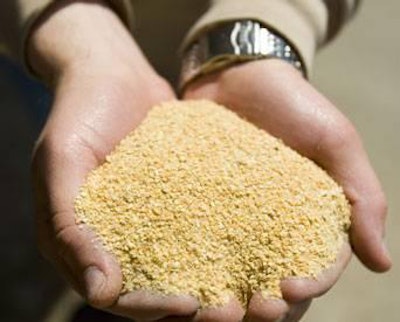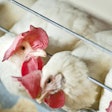
Availability of cheap synthetic alternatives has cut use of soybean meal in animal feed by half
Don’t blame China — or its trade policies, at least — for falling soybean demand.
The use of soybean meal in animal feed has seen a gradual but steady decline since the 1990s, according to the Illinois Soybean Association, and much of that decline may be attributed to the availability of viable, and affordable, synthetic alternatives.
“If you go back to the 1990s, there would be very few of the essential amino acids available on any kind of production-scale volume,” said Bart Borg, director of nutrition for Standard Nutrition Services. “But for each one of those amino acids that comes online and is available on a cost-effective basis, it allows for a reduction in soybean meal use.”
It started in the 1990s, when lysine became commercially available. At the time, he said, the rule of thumb was you could add three pounds of lysine to a ton of feed to replace 97 pounds of soybean meal, using corn to make up the difference. But the comfort level at the time maxed out at about three pounds because soybean meal was needed to provide other essential amino acids.
As the number of amino acids available in crystalline form has increased — thanks, largely, to improvements in fermentation technology — the amount of replaced soybeans as similarly increased, Borg said. Today, it’s not uncommon for pig finishing diets to replace what would have been 400 pounds of soybean meal with 16-18 pounds of amino acids.
Consequently, soybean meal use has decreased from an average of 635 pounds per ton of animal feed in 1990, down to 327 pounds per ton, according to the Illinois Soybean Association.
Borg believes the amount of meal that can be replaced with amino acids has essentially plateaued. But other factors have continued, and even accelerated, the decline of the feed industry’s demand for soybean meal. Around 2005, the use of dried distiller’s grains in animal feed began to take off, and while intended primarily to replace corn, this too has become a competitor to soybean meal, with some distillers producing DDGS that contain 27-40% protein.
“It’s a game changer for soybean meal,” Borg said.
The last year or so has seen even steeper declines due to African swine fever, Borg said. The virus has not only deceased demand for animal feed as a whole, but has also decreased prices for synthetic amino acids, many of which are produced in China.
Yet soybean production has continued to increase in acreage globally so far, a trend Borg attributes to growth in overall livestock and global population numbers. “But if you held livestock numbers the same, you’d have less soybeans,” he said.














